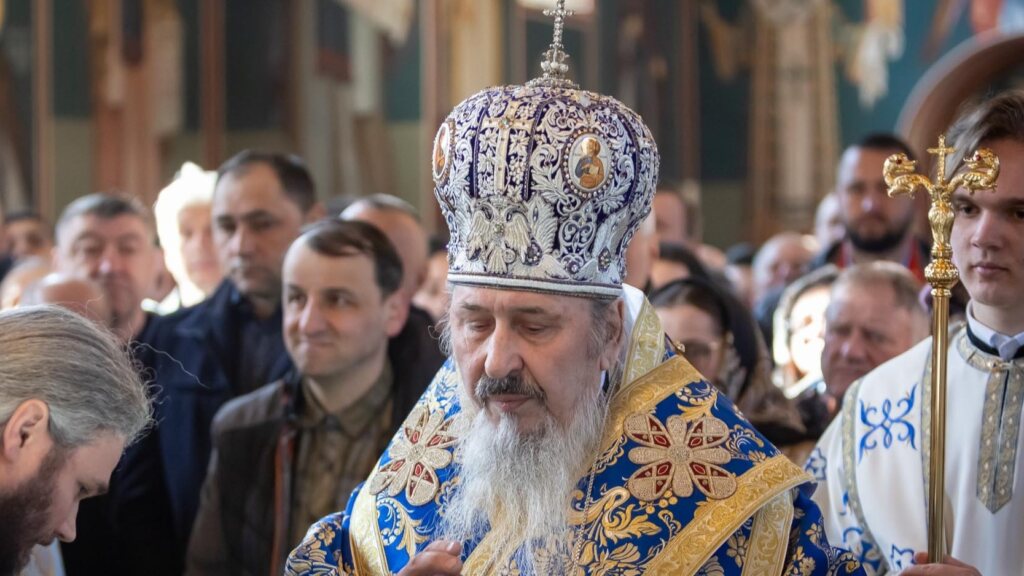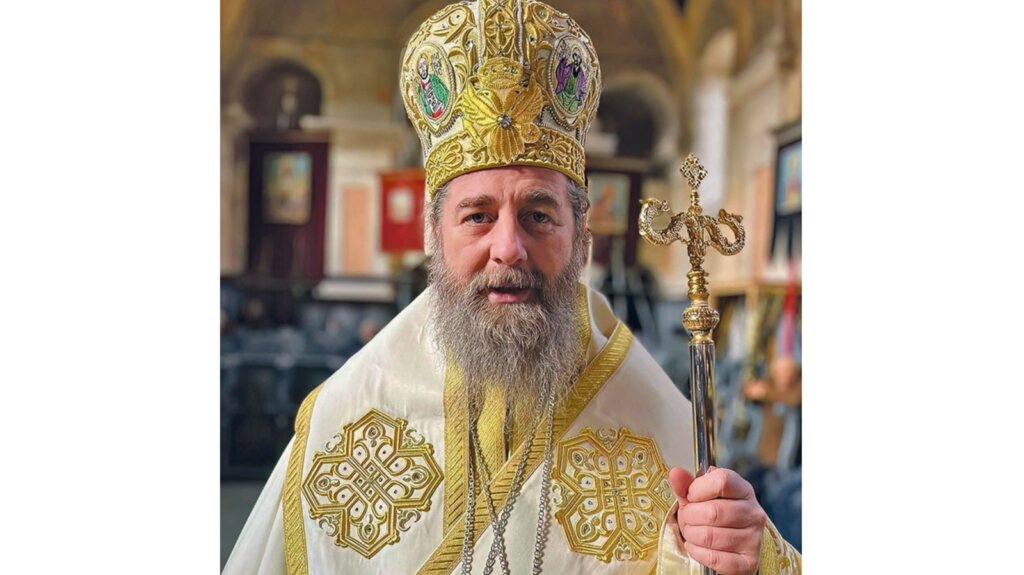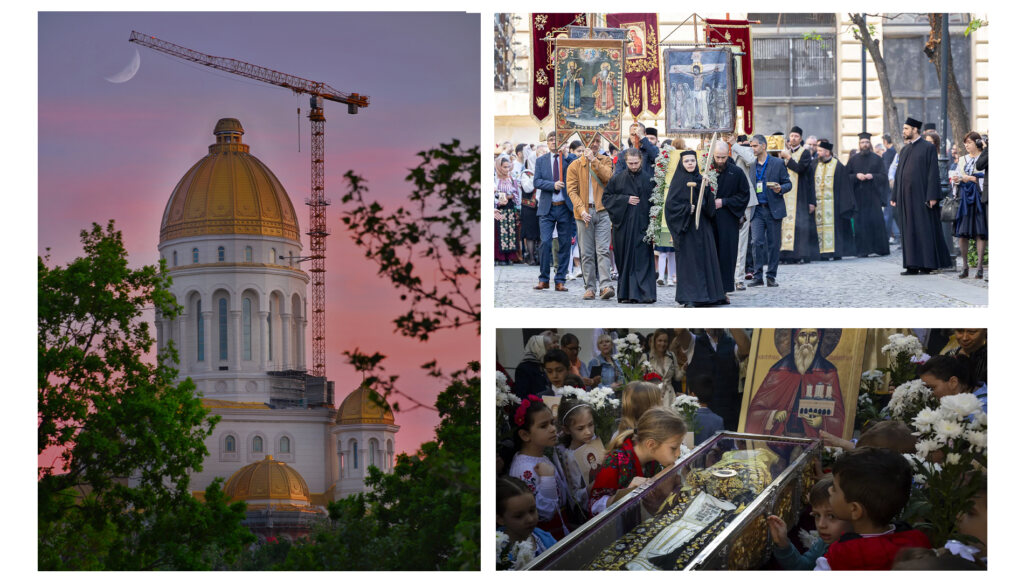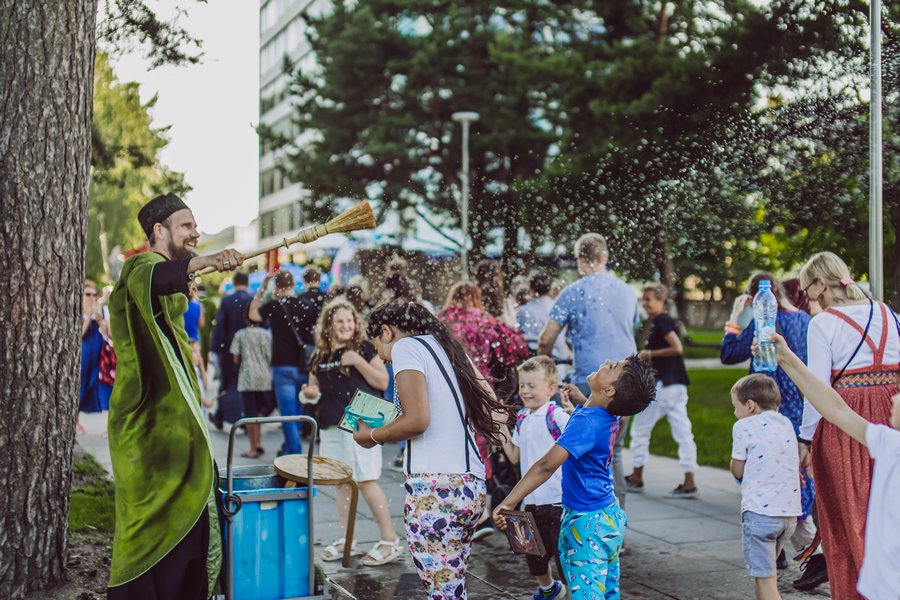In the Church’s annual liturgical cycle, Pentecost is “the last and great day.” It is the celebration by the Church of the coming of the Holy Spirit as the end—the achievement and fulfillment—of the entire history of salvation. For the same reason, however, it is also the celebration of the beginning: it is the “birthday” of the Church as the presence among us of the Holy Spirit, of the new life in Christ, of grace, knowledge, adoption to God and holiness.
This double meaning and double joy is revealed to us, first of all, in the very name of the feast. Pentecost in Greek means fifty, and in the sacred biblical symbolism of numbers, the number fifty symbolizes both the fulness of time and that which is beyond time: the Kingdom of God itself. It symbolizes the fulness of time by its first component: 49, which is the fulness of seven (7 x 7): the number of time. And, it symbolizes that which is beyond time by its second component: 49 + 1, this one being the new day, the “day without evening” of God’s eternal Kingdom. With the descent of the Holy Spirit upon Christ’s disciples, the time of salvation, the Divine work of redemption has been completed, the fulness revealed, all gifts bestowed: it belongs to us now to “appropriate” these gifts, to be that which we have become in Christ: participants and citizens of His Kingdom.
THE VIGIL OF PENTECOST
The all-night Vigil service begins with a solemn invitation:
“Let us celebrate Pentecost, the coming of the Holy Spirit,
The appointed day of promise, and the fulfillment of hope,
The mystery which is as great as it is precious.”
In the coming of the Spirit, the very essence of the Church is revealed:
“The Holy Spirit provides all,
Overflows with prophecy, fulfills the priesthood,
Has taught wisdom to illiterates, has revealed fishermen as theologians,
He brings together the whole council of the Church.”
In the three readings of the Old Testament (Numbers 11:16-17, 24-29; Joel 2:23-32; Ezekiel 36:24-28) we hear the prophecies concerning the Holy Spirit. We are taught that the entire history of mankind was directed towards the day on which God “would pour out His Spirit upon all flesh.” This day has come! All hope, all promises, all expectations have been fulfilled. At the end of the Aposticha hymns, for the first time since Easter, we sing the hymn: “O Heavenly King, the Comforter, the Spirit of Truth…,” the one with which we inaugurate all our services, all prayers, which is, as it were, the life-breath of the Church, and whose coming to us, whose “descent” upon us in this festal Vigil, is indeed the very experience of the Holy Spirit “coming and abiding in us.”
Troparion — Tone 8
Blessed are You O Christ Our God / You have revealed the fishermen as most wise / by sending down upon them the Holy Spirit / through them You drew the world into Your net / O Lover of Man, Glory to You!
Having reached its climax, the Vigil continues as an explosion of joy and light for “verily the light of the Comforter has come and illumined the world.” In the Gospel reading (John 20:19-23) the feast is interpreted to us as the feast of the Church, of her divine nature, power and authority. The Lord sends His disciples into the world, as He Himself was sent by His Father. Later, in the antiphons of the Liturgy, we proclaim the universality of the apostles’ preaching, the cosmical significance of the feast, the sanctification of the whole world, the true manifestation of God’s Kingdom.
THE VESPERS OF PENTECOST
The liturgical peculiarity of Pentecost is a very special Vespers of the day itself. Usually this service follows immediately the Divine Liturgy, is “added” to it as its own fulfillment. The service begins as a solemn “summing up” of the entire celebration, as its liturgical synthesis. We hold flowers in our hands symbolizing the joy of the eternal spring, inaugurated by the coming of the Holy Spirit. After the festal Entrance, this joy reaches its climax in the singing of the Great Prokeimenon:
“Who is so great a God as our God?”
Then, having reached this climax, we are invited to kneel. This is our first kneeling since Easter. It signifies that after these fifty days of Paschal joy and fulness, of experiencing the Kingdom of God, the Church now is about to begin her pilgrimage through time and history. It is evening again, and the night approaches, during which temptations and failures await us, when, more than anything else, we need Divine help, that presence and power of the Holy Spirit, who has already revealed to us the joyful End, who now will help us in our effort towards fulfillment and salvation.
All this is revealed in the three prayers which the celebrant reads now as we all kneel and listen to him. In the first prayer, we bring to God our repentance, our increased appeal for forgiveness of sins, the first condition for entering into the Kingdom of God.
In the second prayer, we ask the Holy Spirit to help us, to teach us to pray and to follow the true path in the dark and difficult night of our earthly existence. Finally, in the third prayer, we remember all those who have achieved their earthly journey, but who are united with us in the eternal God of Love.
The joy of Easter has been completed and we again have to wait for the dawn of the Eternal Day. Yet, knowing our weakness, humbling ourselves by kneeling, we also know the joy and the power of the Holy Spirit who has come. We know that God is with us, that in Him is our victory.
Thus is completed the feast of Pentecost and we enter “the ordinary time” of the year. Yet, every Sunday now will be called “after Pentecost”—and this means that it is from the power and light of these fifty days that we shall receive our own power, the Divine help in our daily struggle. At Pentecost we decorate our churches with flowers and green branches—for the Church “never grows old, but is always young.” It is an evergreen, ever-living Tree of grace and life, of joy and comfort. For the Holy Spirit—“the Treasury of Blessings and Giver of Life—comes and abides in us, and cleanses us from all impurity,” and fills our life with meaning, love, faith and hope.
Martyrs Attalos, Kamasis, Zotikos and Philippos of Niculitsel
The graves of Saints Zoticus, Atallus, Camisius and Philippos were discovered in 1971.
Lesser Scythia (modern Romania), between the Danube and the Black Sea in the northeastern territory of the Roman Empire, was a place of exile or death for Christians who refused to worship the pagan gods. During the persecutions of Decius (249-251), Diocletian and Maximilian (284-305), and Licinius (308-324) thousands of people died there from cold, hunger, or torture.
The relics of those who endured martyrdom because they openly proclaimed their faith in Christ were taken by Christians and buried in secret places. Accounts of the lives and sufferings of these holy martyrs were written and preserved so they would not be forgotten.
When the persecutions ended, the relics were moved from their temporary resting places and placed in special crypts (martyria). Churches were built over these crypts, and the ruins of some of them may be seen today in Dobrogea.
In September 1971 a creek overflowed its banks near the village of Niculițel in the county of Tulcea, revealing one of the oldest of these martyria. The crypt, which is made of bricks, is divided into two rooms, one on top of the other. In the upper room, the relics of four martyrs were found in a single wooden coffin.
All had been decapitated. The heads of three martyrs were found atop their necks, while the head of the fourth martyr was resting on his chest. An inscription on the left wall reads: “Christ’s martyrs.” The names of the four martyrs (Zoticus, Attalus, Camasius, and Philip) were scratched into the right wall.
According to the records which have been preserved, these martyrs were tried by the Roman authorities of Noviodunum (modern Isaccea) and sentenced to death. They were beheaded, then buried at Niculițel. The exact date of their martyrdom is not known.
Some believe that they were slain early in the fourth century during the persecutions of Diocletian or Licinius. Others, however, think the four men may have been martyred north of the Danube during the persecution of the Gothic king Athanaric (370-372) against the Christians.
About a hundred fragments of the bones of two men (aged between 45-50) were found in the lower crypt. It is thought that they died during the persecution of Decius, and then their relics were reinterred at Niculițel around 370-380. The names of these martyrs are not known.
The Syrian Martyrologion and Saint Jerome’s Martyrologion give June 4 as the date of the martyrs’ execution. The Synaxaria list these four martyrs along with six others: Eutychius, Quirinus, Julia, Saturninus, Ninita, Fortunio. Twenty-five others were also beheaded with these martyrs, but are not named.
The relics of these holy martyrs were moved to the Cocoș Monastery in 1971, where they are venerated by the faithful.
Troparion – Tone 4
Your holy martyrs Attalos, Kamasis, Zotikos and Philippos, through their sufferings have received incorruptible crowns from You, our God. For having Your strength, they laid low their adversaries, and shattered the powerless boldness of demons. Through their intercessions, save our souls!
Tr by oca.org






